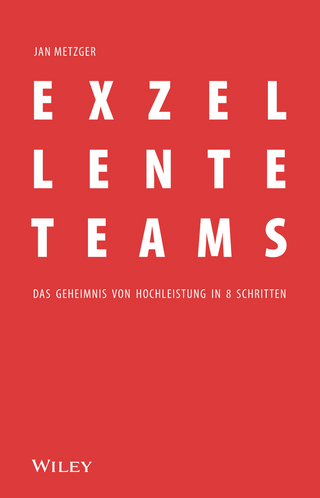
Ergonomic Design for Organizational Effectiveness
Crc Press Inc (Verlag)
978-1-56670-252-2 (ISBN)
- Titel erscheint in neuer Auflage
- Artikel merken
Creating alignment between the office environment, and the business objectives and mission of the organization, this new book provides a framework for the manager to develop strategies and tactics to leverage the work environment as a tool to enhance organizational effectiveness. Drawing from the author's own published research, consulting work, and previously unpublished case studies, each section addresses current research findings that build upon a new framework for thinking about work and the work environment.
Ergonomic Design for Organizational Effectiveness grapples with problems such as:
Overview of the Book
Executive Summary
Our World View and Values
Organization of the Book
PART I: THEORY
A Macroergonomic Approach to Understanding the Work Environment
World Views and Workplace Design
Executive summary
Ways of understanding: empiricist versus organismic worldviews
Empiricist versus organismic perspectives on the work environment
The changing role of the environment
A Macroergonomic Framework
Executive summary
The Macroergonomic framework
A systems understanding
Overview of the macroergonomic model
Phases of internal growth
Environmental Control and Organizational Effectiveness
Executive Summary
Introduction
Environmental Control
Levels of Environmental Control
Discussion
PART II: METHODS
Analysis and Implementation
A Macroergonomic Approach to Diagnosis and Change
Executive Summary
Phases of the Change Process
Education
Analysis of Systems
Design
Implementation
Evaluation
Summary
Creating the Future Through Participatory Design
Executive Summary
Introduction
Practicing the Future
Contextual Inquiry
The Group Consensus Process
Group Process Results
Criteria Development
Summary
PART III: CASE STUDIES AND RESEARCH
The Designed Environment: Individuals, Groups, and Organization
Job and Work Trends
Executive Summary
Workforce Demographic Trends to 2005
Trends in Job Types
Job Creation, Income Distribution, and the Work Environment
Challenges to the Work Environment
Future Work Characteristics
Individual Worker & Work Space Flexibility: Case Studies
Executive Summary
Case Study: Ergonomic Fit and Work Effectiveness Case Study: Workstation Features that Promote Healthy Work for Different Job Types
Case Study: Call Center Operators and Workstation Design
Case Study: Effects of an "Active Storage" Work Environment on Health and Productivity of Project Managers and Accountants
Case Study: Workstation Features that Promote Worker Productivity for Different Job Types
The Individual Worker and Work Space: Research
Executive Summary
Research Project: Workspace Adjustability, Storage and Enclosure as Predictors of Employee Reactions and Performance
Research Project: The Relationship Between Privacy, Control Over the Work Environment, and Stress Responses in Office Workers
Research Project: Crowding in the Office Environment
Design Recommendations
Work Teams and Control over Group Space
Executive Summary
Teams and Teamwork
Forces Leading to the Use of Teams
Types of Teams
Model of Control for Work Groups
Case Study: Effects of a Highly Adjustable Workstation on Project Team Effectiveness
Case Study: Sales Project Team WorkSpaces
Case Study: Work Team Spaces for Insurance Claim Processors
Case Study: Workstation Features that Affect Project Team Effectiveness
Conclusions
Chapter Summary
The Organization and the Adaptive Facility
Executive Summary
Introduction
The Natural Systems Model of Organizational Growth
Systems Model for Organizational Design
Facility Design for Organizational Change
Case Studies
Strategic Realignment of Service Operators' Space
Strategic Realignment of Service Providers' Work Space
Emerging Organizational Designs
Change Agents
Metaphor for Understanding Organizations
Metaphor Case Studies
Case Study: Circus Metaphor
Case Study: Town Square, 1890s
Case Study: The Cruise Ship
Case Study: The Hockey Team
Aligning the Facility with the Business through Wayfinding Systems
Introduction
Research on "You Are Here" Maps and Signage
Design Criteria for YAH Maps
Recent Examples of YAH Map Implementation Chapter Summary
| Erscheint lt. Verlag | 25.3.1998 |
|---|---|
| Zusatzinfo | 32 Halftones, black and white; 23 Tables, black and white |
| Verlagsort | Bosa Roca |
| Sprache | englisch |
| Maße | 156 x 235 mm |
| Gewicht | 771 g |
| Themenwelt | Wirtschaft ► Betriebswirtschaft / Management ► Planung / Organisation |
| ISBN-10 | 1-56670-252-6 / 1566702526 |
| ISBN-13 | 978-1-56670-252-2 / 9781566702522 |
| Zustand | Neuware |
| Haben Sie eine Frage zum Produkt? |
aus dem Bereich



